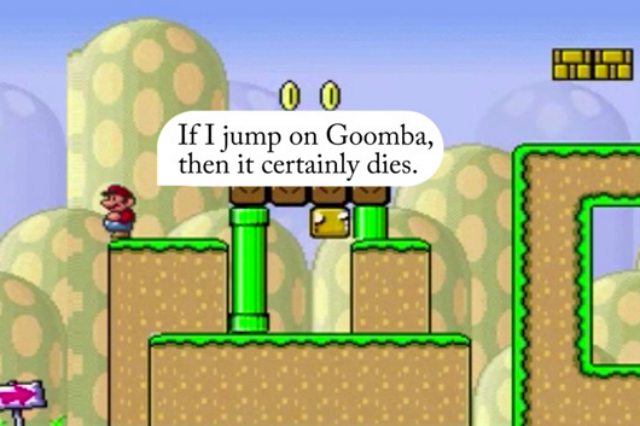
The team used techniques from Cognitive Modeling to design “artificial self-organized cognitive systems that learn multimodal modular sensorimotor bodyspace representations for effective learning and behavior.” Or, to put it in terms that a normal human can understand: They gave Mario a rudimentary sense of self and the capacity to learn.
Mario has a series of internal variables representing his mood. When curious, he explores his environment. When “hungry,” he looks for coins. The researchers also gave him a powerful text parser, allowing them to offer suggestions that he records directly to his knowledge — an example they give is that you could tell Mario that jumping on Goombas always kills them. Mario’s language facility goes both ways, and the researchers can ask him about his well-being or what he knows, and he responds in grammatically correct sentences.
Bots have become a fixture of the video game speedrunning community, allowing for new ways to demonstrate mastery over games in ways perhaps impossible for unassisted mortals. This type of research could also be pertinent for game AI, pointing toward a future where enemies learn to adapt to your tricks, becoming more challenging through observation over time.
More broadly, however, this project is exemplary of why games provide ideal, controlled environments in which to develop artificial intelligences. In time, once Mario has mastered the basics of whether he can jump on a Goomba, he will then be able to start asking “why?”


